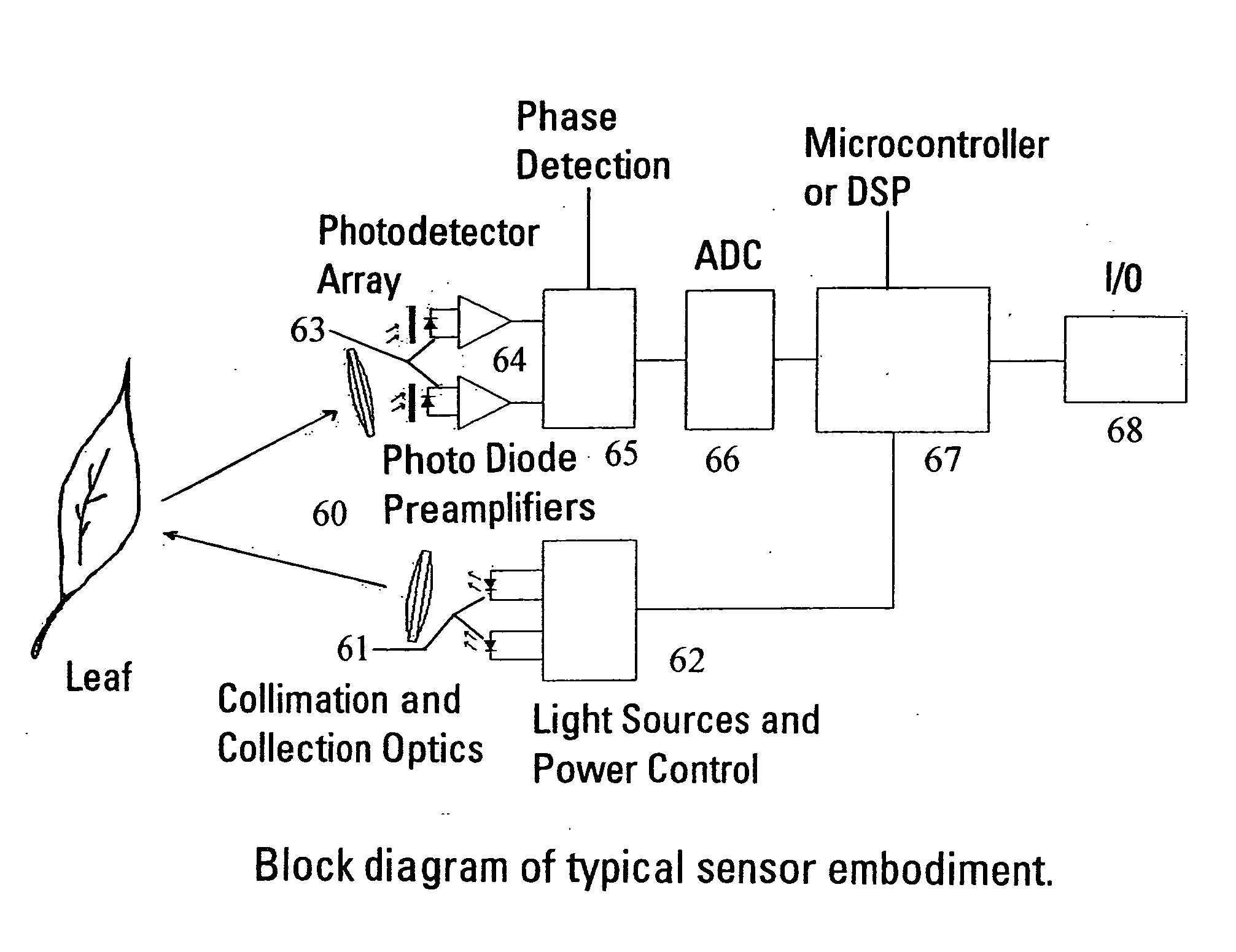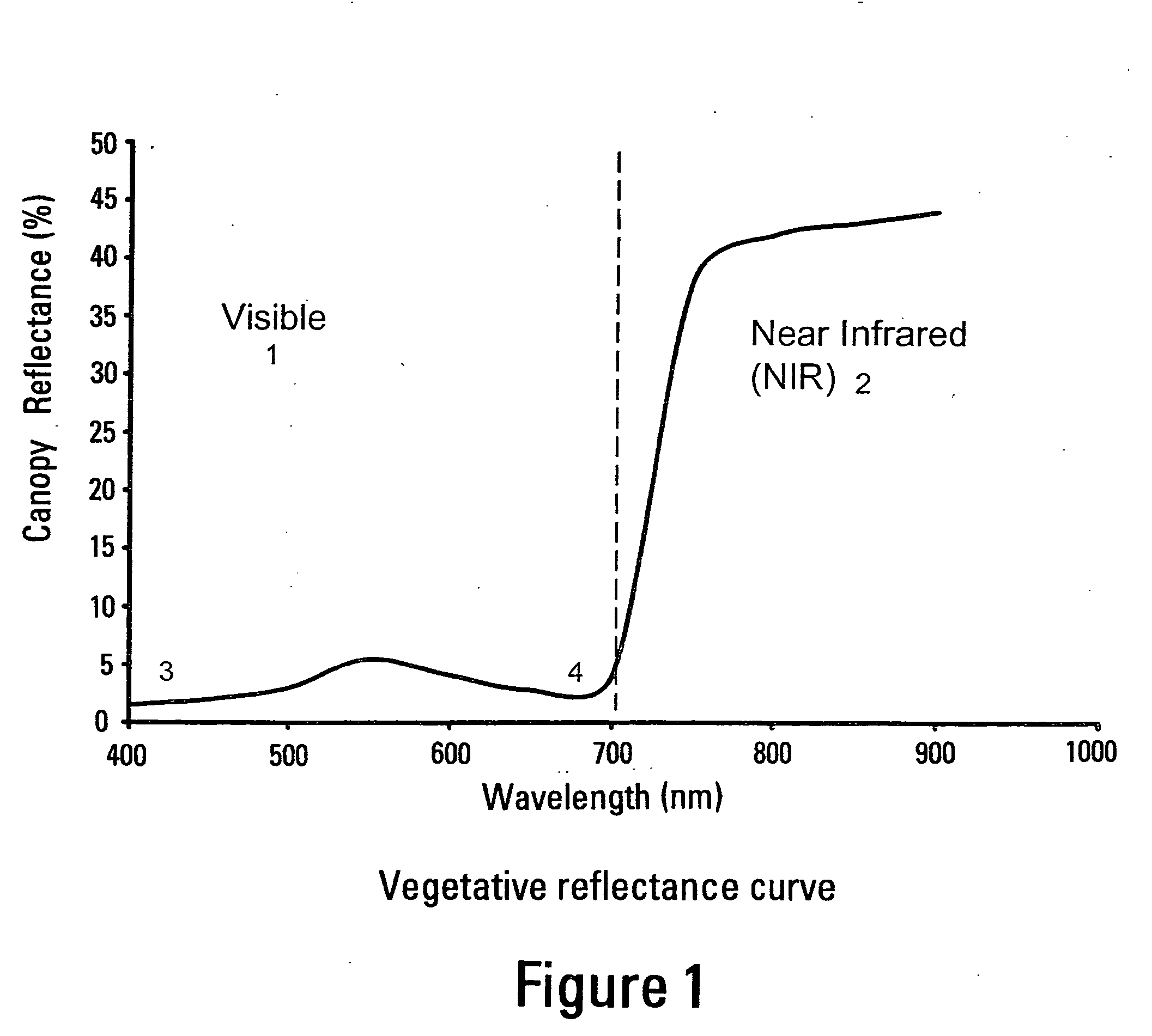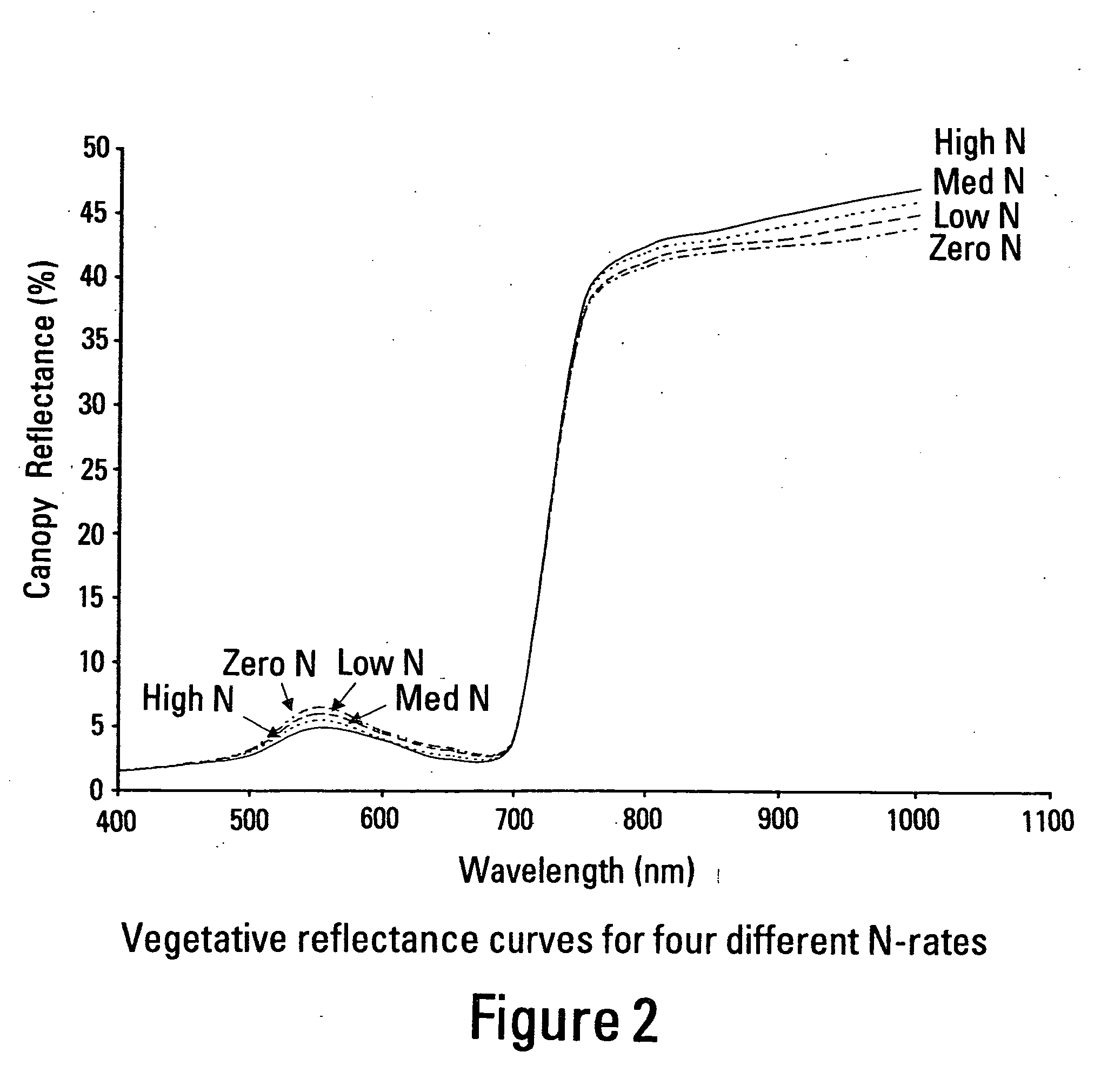Light sensor with modulated radiant polychromatic source
a light sensor and radiant polychromatic technology, applied in the direction of optical radiation measurement, fluorescence/phosphorescence, instruments, etc., can solve the problems of cloud cover adversely affecting visibility, nitrate contamination is increasing both in area and concentration, and the contamination of ground and surface waters, so as to improve performance and cost
- Summary
- Abstract
- Description
- Claims
- Application Information
AI Technical Summary
Benefits of technology
Problems solved by technology
Method used
Image
Examples
Embodiment Construction
[0030] The following contains a description for a sensor that measures plant canopy and soil reflectance independent of ambient illumination levels. More generally, the sensor could be used in any situation where a particular surface condition or feature needed to be remotely detected under variable ambient light conditions. The sensor can be used in stand-alone instrumentation configurations or in a network of sensors mounted to a vehicle or moving apparatus for on-the-go remote sensing applications. The following description of the invention is meant to be illustrative and not limiting. Other embodiments will be obvious in view of this invention.
[0031] The positive relationship between leaf greenness and crop nitrogen (N) status means it should be possible to determine crop N requirements based on reflectance data collected from the crop canopy (Walberg et al., 1982; Girardin et al., 1985; Hinzman et al., 1986; Dwyer et al., 1991) and leaves (McMurtrey et al., 1994). Plants with ...
PUM
| Property | Measurement | Unit |
|---|---|---|
| wavelengths | aaaaa | aaaaa |
| wavelengths | aaaaa | aaaaa |
| reflectance | aaaaa | aaaaa |
Abstract
Description
Claims
Application Information
 Login to View More
Login to View More - R&D
- Intellectual Property
- Life Sciences
- Materials
- Tech Scout
- Unparalleled Data Quality
- Higher Quality Content
- 60% Fewer Hallucinations
Browse by: Latest US Patents, China's latest patents, Technical Efficacy Thesaurus, Application Domain, Technology Topic, Popular Technical Reports.
© 2025 PatSnap. All rights reserved.Legal|Privacy policy|Modern Slavery Act Transparency Statement|Sitemap|About US| Contact US: help@patsnap.com



